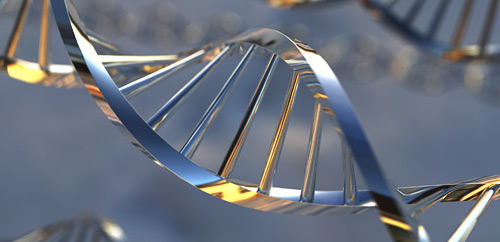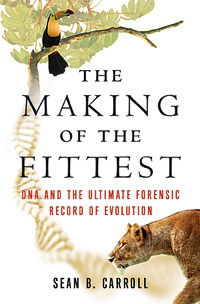

Hi-Tech Hype and the Biochemistry of Aliens

What’s with all the media hype over the latest must-have electronic device, the iPhone? This week on Skepticality, Derek & Swoopy talk to Rob Walch, host of the Today in iPhone podcast, about the cult of Apple’s newest release — and ask whether it lives up to the hype.
While it seems most humans on Earth are busy looking for iPhones, the National Academy of Sciences has published a report that states we need to start looking for alien life with novel biochemistries. Skepticality correspondent Fraser Cain, of Universe Today, helps Derek & Swoopy interpret the The Limits of Organic Life in Planetary Systems, and what it means for the search for life in the universe.
Also of interest
In this week’s eSkeptic feature, Kenneth K. Krause reviews Sean B. Carroll’s book entitled The Making of the Fittest: DNA and the Ultimate Record of Evolution (W.W. Norton, 2006, ISBN 9780393061635).
Kenneth W. Krause is a former prosecutor and criminal defense attorney with degrees in law, history, literature, and fine art. Books editor for Secular Nation, Kenneth has recently contributed to Free Inquiry, Skeptical Inquirer, the Humanist, and Skeptic as well.

3D-rendered DNA strand
DNA as Evolution’s Proof
book review by Kenneth W. Krause
Publishers have flooded the popular science market in recent years with respectable but frustratingly sketchy accounts of evolution. Generalizations, metaphors, and defensive polemics have all too frequently been offered not as supplements to, but as surrogates for, authentic science. Arguably, the most essential and epic narrative ever, notwithstanding those relating to the origins of life and the universe itself, surely deserves better. And so does the reasonably intelligent reader.
Enter Sean Carroll, University of Wisconsin-Madison professor of genetics, who has served up an intellectual feast for the second time in as many years. In 2005, he catered Endless Forms Most Beautiful, the much-acclaimed application of embryonic development science to the standard evolutionary paradigm. And now, in The Making of the Fittest, Carroll shares with us some of the finer and more satisfying details of natural selection and descent with modification. A rapidly expanding library of DNA sequences and the new science of genomics, the comparative study of various species’ DNA, have finally allowed scientists, nearly 150 years following the first publication of Darwin’s On the Origin of Species, to actually see how the fittest are made, to identify the specific genetic changes that have enabled species to adapt to their diverse environments through the ages.
Carroll begins with a look at the most ancient DNA on Earth, genetic text that has somehow withstood a steady barrage of mutations for more than two billion years. These “immortal genes” endure not because they avoid all mutations, but rather because natural selection has “purified” certain amino acid sequences to prevent them from changing in ways that would compromise certain functions basic to all domains of life, archaea, bacteria, and eukaryotes (including humans) alike.
Carroll’s reasoning goes like this: Each amino acid is composed of three nucleotide bases, or a triplet (AAG, ACT, etc.), in the DNA molecule. For each possible triplet, there are 576 potential single random base mutations. Some changes are called “synonymous” because, despite mutation, the resulting triplets encode the same amino acid, allowing the protein to perform an equivalent function. Other changes are said to be “nonsynonymous” because mutation results in a different amino acid, which in turn alters the protein’s utility. If mutation occurred in a completely random fashion, one would expect nonsynonymous changes to outnumber synonymous changes three to one. That is not what is found. In fact, the real world ratio is reversed, three to one in favor of synonymous changes. “DNA sequences that encode the same protein but that are substantially different,” Carroll surmises, “are unmistakable evidence of natural selection allowing mutations that do not change protein function, while acting to eliminate mutations that would.”
But evolution is not merely loss prohibitive; it is intensively creative as well. Consider first the development of color vision in certain primates. All Old World (African and Asian) apes and monkeys, including humans, possess trichromatic color vision encoded by three opsin genes, SWS (sensitive to blue light tuned to a wavelength of 417 nanometers), MWS (green to 530 nm), and LWS (red to 560 nm). New World monkeys and most other mammals have dichromatic vision and just a single gene responsible for encoding the MWS/LWS opsin (light to wavelengths from 510 to 550 nm).
Carroll demonstrates how, in humans, the first set of three opsins evolved from the second set of two possessed by the common ancestor of apes and Old World monkeys. Our separate green and red opsins are 98 percent similar and lie together head-to-toe on our X chromosome. Such characteristics are highly suggestive of gene duplication followed by a divergence of function. By isolating amino acids, replacing one with another, and measuring the effects of such replacements, biologists have determined that only three amino acid positions are responsible for the fine spectral tuning of human MWS and LWS opsins to 530 nm and 560 nm. Such precise color tuning, Carroll concludes, must have been under intense selective pressure in the natural world. Indeed, detailed field studies of food preference and consumption habits among trichromatic chimpanzees, lemurs, and colobus and spider monkeys consistently revealed a fondness for redder leaves, indicative of high protein levels and low toughness.
Discriminating between a light source’s wavelengths, of course, is the occupation of the eye’s cone photoreceptor cells, which are most useful in brightly lit environments. Consider next the evolution of deep-sea vision. Seeing in dim light, by contrast, requires the use of a species’ rod photoreceptors. Rhodopsins in most terrestrial animals are tuned to maximally absorb wavelengths of approximately 500 nm; but, at ocean depths of 200 meters or so, only a narrow band of blue light with a wavelength of 480 nm is available. Amazingly, the rhodopsins of dolphins, Sowerby’s beaked whales, and deep-sea fish are “blue-shifted,” or fine-tuned 10–20 nm toward the blue end of the light spectrum.
Exactly how did this happen? By replacing amino acids found in one species with those of another, scientists have distinguished three positions, 83, 292, and 299, that are primarily responsible for the 11 nm shift in bottlenose dolphins. The beaked whale’s rhodopsin is further blue-shifted to 484 nm and differs from its dolphin counterpart only at site 299. Interestingly, deep-sea eels possess a rhodopsin that is blue-shifted to 482 nm and contains the same three crucial amino acids as that of the beaked whale. Shallow-water eels, by contrast, have a rhodopsin sensitive to a wavelength of 502 nm, akin to that of terrestrial mammals, and identical at the three crucial sites to the rhodopsins of harbor seals and manatees, two surface-dwelling mammals. Perhaps even more significant, however, is the fact that eels are fish, the evolutionary lines of which split away from other vertebrates hundreds of millions of years ago. Whales and dolphins are cetaceans — mammals descended from a terrestrial ancestor that eventually returned to the water. Only independent evolution can explain this phenomenon. According to Carroll, “When two species or groups of species evolve the same exact amino acids in a protein in adapting to similar environments, this is very strong evidence of natural selection for the same adaptation.”
But in some notable instances natural selection relaxes altogether, allowing harmful mutations to accumulate and to “fossilize” an organism’s DNA. Take the coelacanth, for example, a large, primitive fish thought to be closely related to the first four-legged vertebrates. With no MWS/LWS gene, the coelacanth’s only hope for color vision lies with its short-wavelength SWS gene. But alas, this opsin, though still recognizable, is so riddled with mutations that it is no longer capable of constructing a functional protein. Dolphins and whales also possess a fossilized SWS opsin gene. But of course we shouldn’t feel sorry for these deep-water creatures because, unlike their ancestors, they have absolutely no use for color vision. Predictably, nocturnal and subterranean mammals like the owl monkey, bush baby, slow loris, and blind mole rat also possess independently fossilized SWS genes. These pathetically useless remnants of a primordial ancestor’s lifestyle supply solid evidence against theories of design. Unlike an intelligent creator, “[n]atural selection cannot preserve what is not being used and it cannot plan for the future,” writes Carroll. “The fossilization and loss of genes are exactly what is predicted to evolve in the absence of natural selection.”
At this point, one can hardly help but recognize a profound similarity in the mechanisms of vision among complex animals. Indeed, recent discoveries have shown that tremendously different-looking eyes have much more in common than anyone had previously thought. For example, the same “tool kit” protein — now referred to as Pax-6 — controls the construction of eyes belonging to creatures as diverse as worms, flies, mice, squid, and humans, implying an extremely ancient, common ancestor with a primitive eye composed of photoreceptor and pigment cells. “The eye,” Carroll observes, “far from being one of the most difficult structures to account for by evolution, has become instead one of the leading sources of insights into how evolution works with common genetic tools to build complex organs.”
A remarkably comprehensive presentation, The Making of the Fittest does not confine itself to ocular-based discussions. Readers will delight in challenging illuminations of everything from the evolution of human skin color and sickle cell anemia to the invention of an “antifreeze” gene in the bloodless icefish of Bouvet Island. And despite two concluding chapters censuring the popular denial of science and ecological irresponsibility, Sean Carroll’s text is refreshingly void of pretension and politics. Clearly, this is the work of a truly impassioned scientist.
Richard Dawkins Replies to David Sloan Wilson
In his Skeptic article entitled “Why Richard Dawkins is Wrong About Religion” (initially published online in eSkeptic, July 4th 2007), David Sloan Wilson writes:
When Dawkins’ The God Delusion was published I naturally assumed that he was basing his critique of religion on the scientific study of religion from an evolutionary perspective. I regret to report otherwise.

Richard Dawkins during his lecture at Caltech based on The God Delusion
Why would Wilson ‘naturally assume’ any such thing? Reasonable, perhaps, to assume that I would pay some attention to the evolution of religion, but why base a critique on an evolutionary perspective, any more than on Assyrian woodwind instruments or the burrowing behaviour of aardvarks? The God Delusion does, as it happens, have a chapter on the evolutionary origins of religion. But to say that this chapter is peripheral to my main critique would be an understatement. When I was asked to prepare an abridgment for the British audio recording, I had to decide which bits of the book were essential, and which bits could, however regretfully, be left out. My first cut, and the only chapter I deleted completely, was the chapter on evolutionary origins. Sad as I was to lose it (I was consoled by the fact that we also recorded an unabridged version for the American market) it seemed to me the least essential chapter to the central theme of the book.
The central theme of the book is the question of whether God exists. I agree that it is also interesting to ask whether religion has some kind of Darwinian survival value. But whatever the answer to that might turn out to be, it will make no difference to the central question of whether God exists. Religious belief might have a positive survival value and God might or might not exist. Religious belief might have a negative survival value and God might or might not exist. Moreover, other important aspects of my critique, dealt with in other chapters of The God Delusion, are also unaffected by religion’s possible evolutionary advantages.
As for group selection (either as normally understood or in the idiosyncratic sense of Wilson’s private re-definition, about which he has been obsessing for thirty years), The God Delusion devotes a sympathetic page and half to the possibility that something like it might apply to the special case of religion. But a page and a half was all I could spare because I had more interesting matters to talk about, for example the “moth in the candle flame” theory of the origins of religion. I referred my readers to Wilson for a fuller treatment of what he calls group selection, and moved on. I thought it a generous gesture at the time, and I see no reason now to regret my choice to write my own book rather than his.










